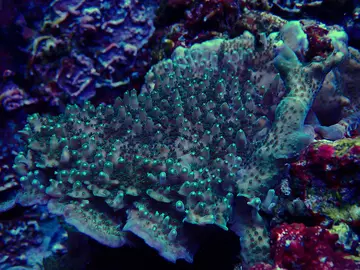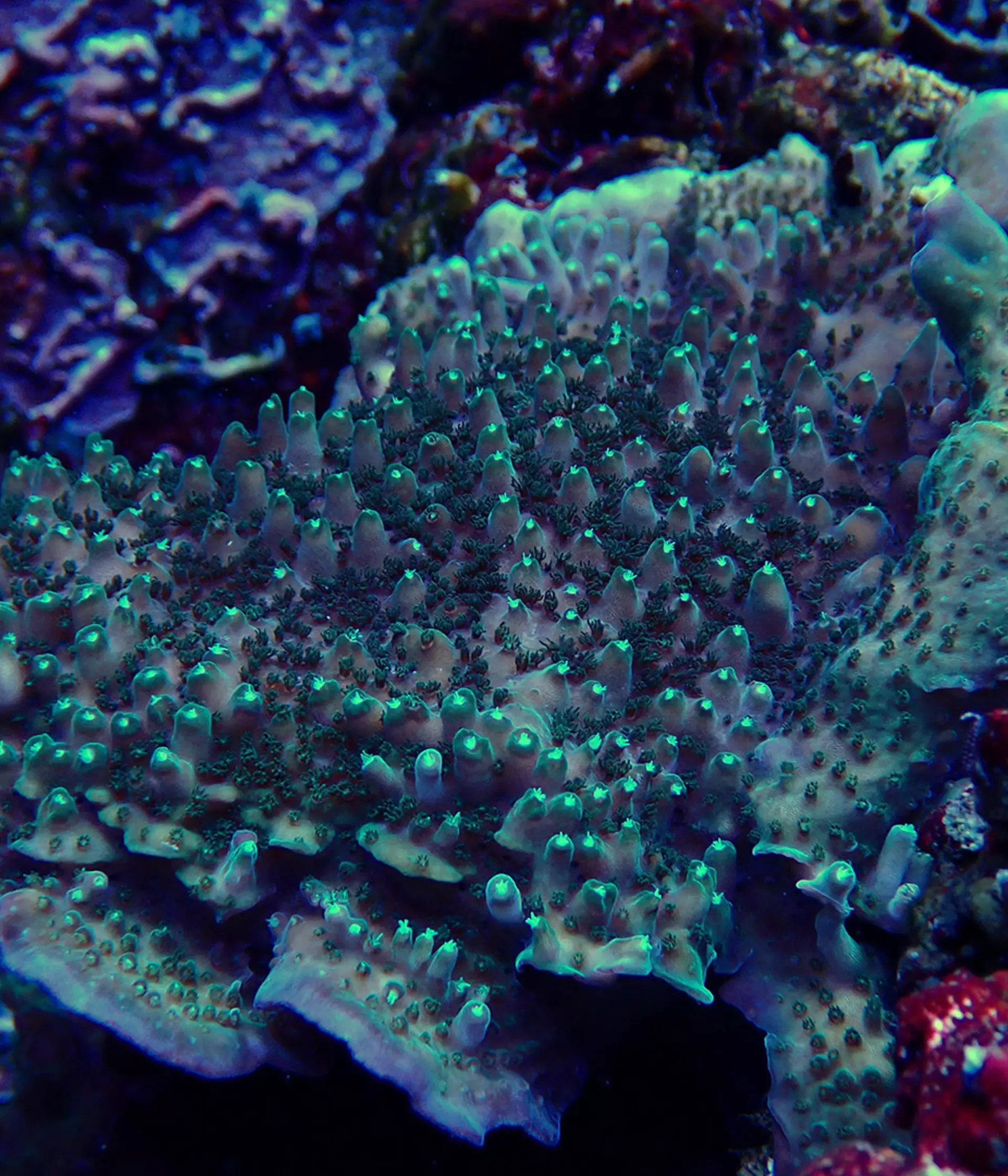
What do staghorn corals look like?
As the name suggests, staghorn corals are instantly recognisable, due to the structures that resemble the horns of a stag. These structures are actually made of a substance called ‘aragonite’ which is secreted by specialised cells located just above the coral skeleton.
Staghorns make up a large part of the complex structure of reef systems, with their branches creating cover for young fish.
They can grow up to two inches a year, and colours can vary from greys and browns to pinks, purples and blues.

What do staghorn corals eat?
Staghorn corals are nocturnal predators with stinging tentacles, which helps them to catch tiny aquatic animals called zooplankton. They also have a symbiotic relationship with algae. Through photosynthesis, the algae converts sunlight into energy and provides nutrients for the coral, and in exchange, the algae has protection from predators.
What threats do staghorn corals face?
Climate change is one of the biggest threats facing all coral species today, and staghorn corals are no exception; they have a particularly low tolerance to coral bleaching.
These corals are also at risk of unsustainable harvesting for the aquarium trade, with some species being Critically Endangered.
The coral reef in our Tiny Giants area of the Zoo is mostly grown from coral rescued from smugglers and destined for private fish tanks or to be dried and turned into jewellery or curios.
Look out for the corals, including staghorns, and the aquatic wildlife they support when you next visit.
